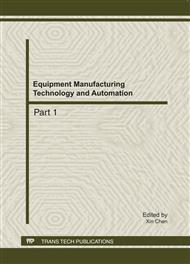p.1787
p.1791
p.1797
p.1801
p.1805
p.1813
p.1818
p.1822
p.1826
Paired Characterization and Preliminary Correction of Low-Cost Soil Moisture Sensors for Wireless Sensor Network Application
Abstract:
In order to fulfill the need of minimizing sensor cost and characterizing sensor agricultural application for the promising wireless sensor network technology, this paper evaluates a pair of SMC sensors (EC-5 and 5TE) under some laboratory experiments which is based on a standardized sensor characterization methodology using liquid medium with a known standard water content. The results showed that the electronics of the EC-5 and the 5TE are sensitive to temperature, electric conductivity and pH variations and it is concluded that both the 5TE sensor and the EC-5 sensor are suitable for wireless network applications. Moreover, the results of this paper also suggested that the effects of temperature, electric conductivity and pH on the sensor measurement ability have to be compensated using the appropriate correction functions. Future work will focus on the field application of these sensors and their correction effects in more detail to derive more general correction functions.
Info:
Periodical:
Pages:
1805-1809
Citation:
Online since:
August 2011
Authors:
Price:
Сopyright:
© 2011 Trans Tech Publications Ltd. All Rights Reserved
Share:
Citation:


